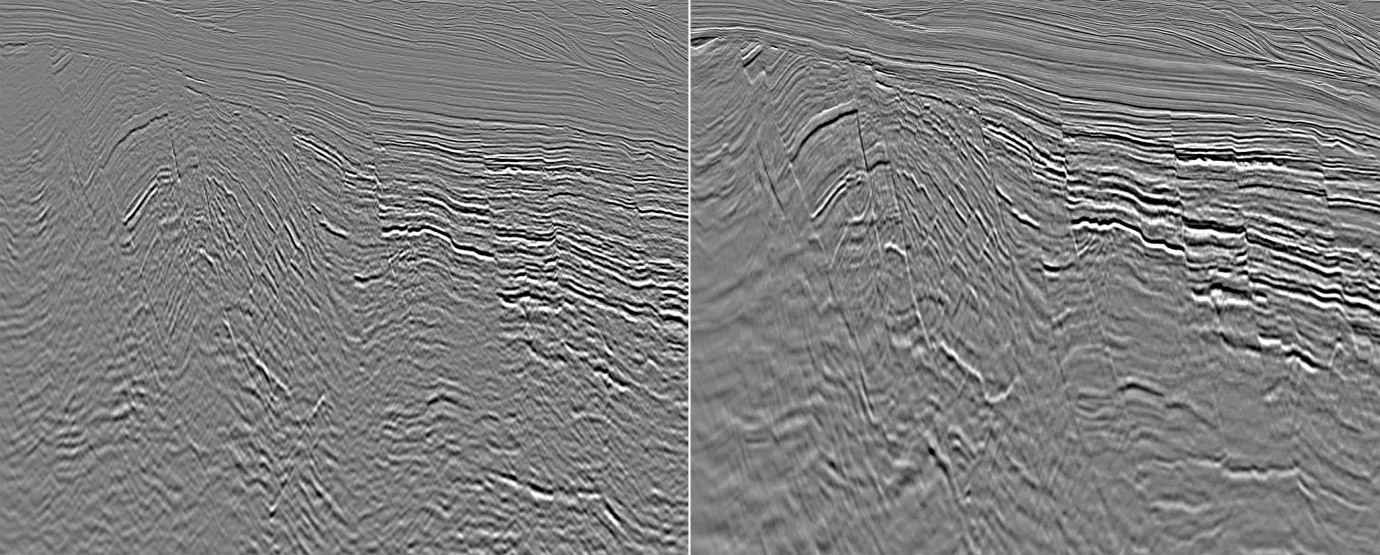Latest acquisition and imaging technologies highlight new exploration potential in the Gippsland Basin, southeastern Australia
Gippsland, Australia’s premier oil-producing province, is considered a mature basin in decline. The major fields were discovered from the 1960s and the primary reservoirs have been extensively explored, producing more than 4 billion barrels of liquid hydrocarbons and 7 trillion cubic feet of gas.1
But with infrastructure already in place and a projected shortfall in Australia’s East Coast gas supplies, Viridien wanted to know if there was more to be discovered by re-evaluating existing datasets. Any uplift in data quality could shed new light onto the remaining potential of this prolific basin.
Challenging pre-conceived ideas
Although the basin has extensive 2D and 3D seismic coverage over the well-explored shelf areas, the deeper water areas have limited coverage, with extensive areas having no 3D coverage at all. Also, historically, imaging within the Gippsland Basin has been extremely challenging due to the complex overburden and shelf break.
It was precisely these previously unresolved depth imaging issues that prompted Viridien to apply its cutting-edge, high-end technologies to reprocess the existing data. This innovative data will help the industry identify new and previously overlooked prospects and revitalize exploration, particularly in the deeper stratigraphic section.
As Jarrad Grahame (Senior Geoscientist, Multi-Client, Australia and Asia) explains: “We knew from our extensive experience of reprocessing legacy datasets that if we applied our latest technology to the vintage Gippsland data, we could overcome these issues and deliver the highest-fidelity depth images possible for improved prospect mapping and evaluation.”
Rejuvenated data reveals untapped reservoir potential
After results from a small test area showed a significant improvement, the ReGeneration program went ahead in 2019, reprocessing a total of 10,200 sq km of 3D seismic data from 16 vintages to produce a high-quality, contiguous dataset. The new technologies led to a step-change in data quality, revealing new potential deep reservoir targets and extensively improving basin understanding.
Encouraged by the enhanced results from ReGeneration, Viridien then acquired a new 8,750 sq km basin-scale 3D seismic dataset in 2020 to further enhance data quality and extend 3D coverage into the unexplored deepwater acreage. The survey benefited from an advanced acquisition design, including 7,000-meter-long multi-sensor streamers and a wide-tow triple source, for imaging deep targets beneath the complex overburden. The data is currently being processed at Viridien’s Perth subsurface imaging center with the latest technologies, including time-lag FWI and least-squares QPSDM.
A new dawn for Gippsland exploration
“Our interpretation of the recently delivered fast-track results has already revealed insights that will be further expanded upon with completion of the final processed volume in late 2021,” Jarrad adds. “These will be key to evaluating new potential in Gippsland, and this is recognized by companies operating there, like Emperor Energy, which is already seeing new opportunities for appraisal and exploration drilling.”2
The success of ReGeneration proves that even in basins that are considered mature, new ideas and imaging technologies can change long-held perceptions and rejuvenate exploration activities.

References
1. GEOSCIENCE AUSTRALIA, 2012
2. Press release issued by Emperor Energy on 8 April 2021 about its purchase of Viridien’s multi-client data over the Judith field: “Initial examination of the new data by EMP’s consulting geologists and geophysicists confirms a major improvement in seismic data quality … providing high definition imagery across the Judith Gas Field and much of the Greater Judith Structure and the potential to significantly de-risk … for appraisal and exploration drilling. Some further improvement in data quality is expected in the final processed data volume.”
